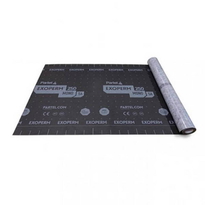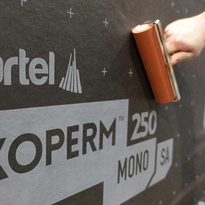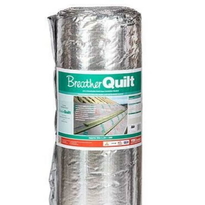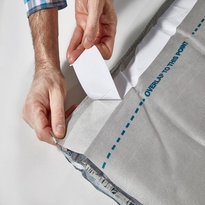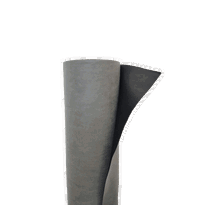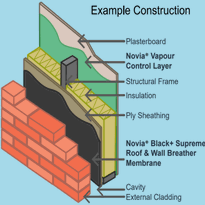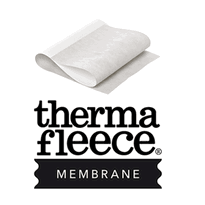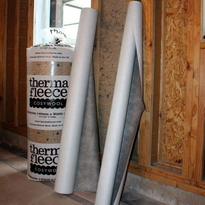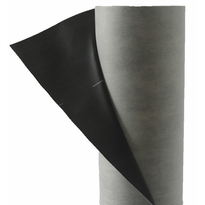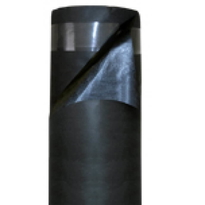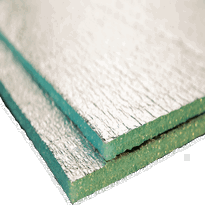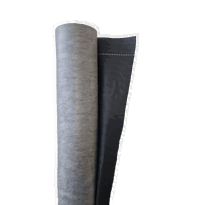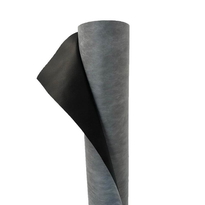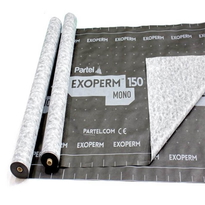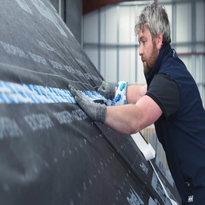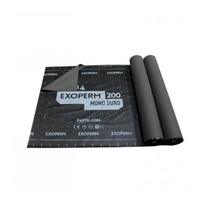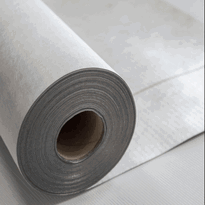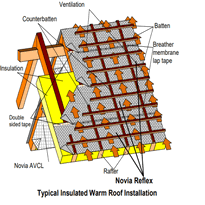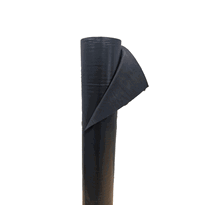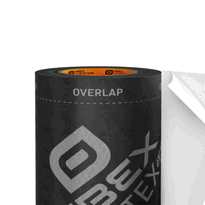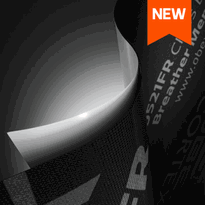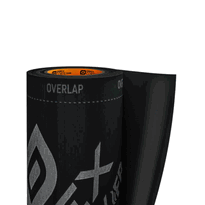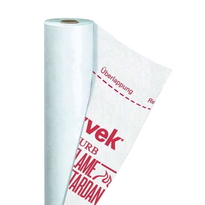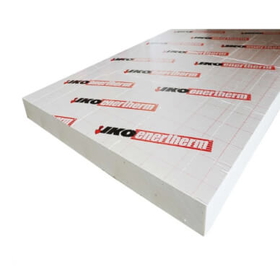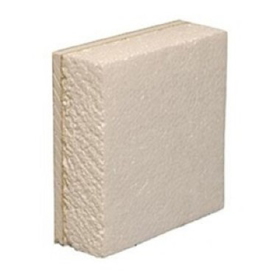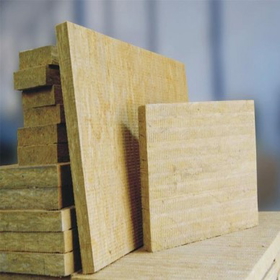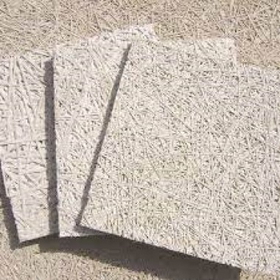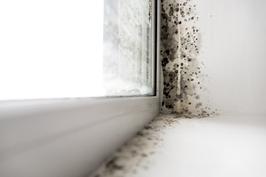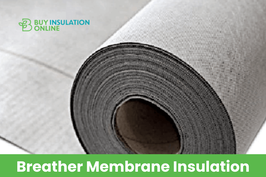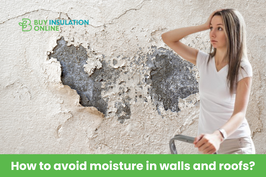Similar Categories
Breathable Membrane: A Guide to Choosing and Installing the Right Product for Your Project
If you are looking for a way to improve the energy efficiency, comfort, and durability of your building, you may want to consider using a breathable membrane. A breathable membrane is a type of building material that allows water vapour to pass through but prevents liquid water and air from penetrating. This helps to create a more balanced and healthier indoor environment, as well as protect the structure from moisture damage and mould growth.
But what exactly is a breathable membrane, and how do you choose and install the right one for your project?
In this article, we will answer these questions and more, and provide you with some useful tips and recommendations. We will also introduce you to some of the best breathable membrane products available from Buy Insulation Online, a leading online supplier of insulation and building materials in the UK.
What is a Breathable Membrane?
A breathable membrane, also known as a vapour permeable membrane, is a thin layer of material that is designed to control the movement of water vapour and air in a building. It is usually installed on the external side of the insulation layer, either on the roof or the wall, to create a secondary barrier against the elements.
A breathable membrane has two main functions:
- It allows water vapour to escape from the inside of the building, preventing condensation and dampness problems. This is especially important in buildings that have high levels of humidity, such as kitchens, bathrooms, and laundry rooms.
- It prevents liquid water and air from entering the building from the outside, protecting the insulation and the structure from rain, snow, wind, and dust. This is especially important in buildings that are exposed to harsh weather conditions, such as strong winds, heavy rains, and snow loads.
By performing these two functions, a breathable membrane helps to create a more comfortable and healthier indoor climate, as well as improving the thermal performance and longevity of the building.
Why Use a Breathable Membrane?
 There are many benefits of using a breathable membrane in your building project, such as:
There are many benefits of using a breathable membrane in your building project, such as:
- It reduces the risk of condensation and mould growth, which can cause health problems, such as asthma, allergies, and respiratory infections, as well as damage the building materials and reduce their effectiveness.
- It improves the energy efficiency of the building, as it prevents heat loss through air leakage and enhances the performance of the insulation layer. This can lower your heating and cooling costs, as well as reduce your carbon footprint and environmental impact.
- It increases the durability and lifespan of the building, as it protects the structure and the insulation from moisture damage, such as rot, corrosion, and decay. This can save you money and time on maintenance and repairs, as well as increase the value and appeal of your property.
- It provides flexibility and versatility in your design choices, as it can be used with various types of insulation materials, such as mineral wool, fibreglass, cellulose, and multifoil. It can also be used with different types of roof and wall systems, such as pitched roofs, flat roofs, timber frames, and masonry walls.
How to Choose a Breathable Membrane?
There are many factors to consider when choosing a breathable membrane for your project, such as:
- The type and location of your project. Different types of buildings and climates may require different levels of breathability, water resistance, and strength. For example, a roof membrane may need to be more water-resistant and durable than a wall membrane, and a membrane for a coastal or mountainous area may need to be more wind-resistant and UV-resistant than a membrane for an urban or inland area.
- The type and thickness of your insulation. Different types and thicknesses of insulation may affect the amount of water vapour and air that passes through the membrane. For example, a thicker or denser insulation may reduce the breathability of the membrane, and a multifoil insulation may require a more breathable membrane than a mineral wool insulation.
- The type and size of your ventilation. Ventilation is essential for maintaining a healthy and balanced indoor environment, as it helps to remove excess moisture, odours, and pollutants from the air. However, too much or too little ventilation can also cause problems, such as heat loss, draughts, noise, and dust. Therefore, you need to choose a membrane that matches the type and size of your ventilation system, such as ridge vents, eaves vents, or mechanical vents.
- The quality and performance of the membrane. You want to choose a membrane that meets or exceeds the relevant standards and regulations for your project, such as BS EN 13859-1 for roof membranes and BS EN 13859-2 for wall membranes. You also want to choose a membrane that has a high vapour permeability, a high water resistance, a high tensile strength, and a high UV resistance, as these are the key indicators of the quality and performance of the membrane.
How to Install a Breathable Membrane?
Installing a breathable membrane is not a difficult task, but it does require some care and attention to detail, as well as the right tools and accessories. Here are some general steps and tips for installing a breathable membrane:
- Prepare the surface. Make sure that the surface where you are going to install the membrane is clean, dry, and smooth, and that there are no sharp objects, such as nails, screws, or staples, that could puncture or damage the membrane.
- Measure and cut the membrane. Measure the length and width of the area where you are going to install the membrane and add some extra allowance for overlaps and edges. Cut the membrane to the required size, using a sharp knife or scissors, and mark the top and bottom edges of the membrane with a marker or tape.
- Fix the membrane. Start from the bottom of the roof or the wall, and roll out the membrane horizontally, making sure that the top edge is facing upwards. Fix the membrane to the surface, using nails, staples, or tapes, and leave some slack in the membrane to allow for expansion and contraction. Overlap the membrane by at least 150 mm at the horizontal joints, and at least 100 mm at the vertical joints, and seal the overlaps with tapes or adhesives. Make sure that the membrane is continuous and tight, and that there are no gaps or wrinkles in the membrane.
- Finish the installation. Trim the excess membrane at the edges, and fold and secure the membrane around the corners, openings, and penetrations, such as windows, doors, pipes, and vents. Install the counter battens, the tiles, the cladding, or the plasterboard over the membrane, and make sure that the membrane is not exposed to direct sunlight or weathering.
What are the Best Breathable Membrane Products from Buy Insulation Online?
 Buy Insulation Online is a trusted and reliable online supplier of insulation and building materials in the UK, offering a wide range of high-quality and affordable products for various types of projects. Some of the best breathable membrane products from Buy Insulation Online are:
Buy Insulation Online is a trusted and reliable online supplier of insulation and building materials in the UK, offering a wide range of high-quality and affordable products for various types of projects. Some of the best breathable membrane products from Buy Insulation Online are:
- Novia Reflex Reflective Breather Membrane: This is a premium roof and wall membrane that has a reflective aluminium foil layer on one side, which enhances the thermal performance and the vapour permeability of the membrane. It is suitable for use with multifoil insulation, as well as mineral wool and fibreglass insulation. It has a vapour permeability of 0.75 MNs/g, a water resistance of W1, a tensile strength of 350/300 N/50 mm, and a UV resistance of 3 months.
- YBS BreatherQuilt Breathable Multifoil Insulation: This is a unique and innovative product that combines a breathable membrane and multifoil insulation in one product, offering a high level of thermal insulation, vapour permeability, and water resistance. It is ideal for use on roofs and walls, especially in timber frames and modular buildings. It has a thermal conductivity of 0.034 W/mK, a vapour permeability of 0.96 MNs/g, a water resistance of W1, and a tensile strength of 1050/950 N/50 mm.
- Novia Black Plus Roof and Wall Breather Membrane: This is a standard roof and wall membrane that has a black colour and a smooth texture, which makes it easy to handle and install. It is suitable for use with various types of insulation materials, such as mineral wool, fibreglass, and cellulose. It has a vapour permeability of 0.6 MNs/g, a water resistance of W1, a tensile strength of 250/200 N/50 mm, and a UV resistance of 3 months.
- Thermafleece Breather Membrane: This is a natural and sustainable roof and wall membrane that is made from sheep’s wool, which provides excellent thermal insulation, vapour permeability, and water resistance. It is compatible with various types of insulation materials, such as mineral wool, fibreglass, and multifoil. It has a thermal conductivity of 0.039 W/mK, a vapour permeability of 0.65 MNs/g, a water resistance of W1, and a tensile strength of 180/160 N/50 mm.
- Novia FR Breather Membrane: This is a fire-resistant roof and wall membrane that has a special coating that enhances the flame retardancy and the vapour permeability of the membrane. It is suitable for use in buildings that require a high level of fire safety, such as schools, hospitals, and public buildings. It has a vapour permeability of 0.6 MNs/g, a water resistance of W1, a tensile strength of 250/200 N/50 mm, and a fire rating of Class B-s1,d. It has a vapour permeability of 0.6 MNs/g, a water resistance of W1, a tensile strength of 250/200 N/50 mm, and a fire rating of Class B-s1, d0.
- Soplutec UVBlack Rainscreen and External Breathable Membrane: This is a high-performance roof and wall membrane that has a black colour and a UV-resistant coating, which makes it suitable for use in rainscreen and external applications, where the membrane is exposed to sunlight and weathering. It is compatible with various types of insulation materials, such as mineral wool, fibreglass, and multifoil. It has a vapour permeability of 0.8 MNs/g, a water resistance of W1, a tensile strength of 400/300 N/50 mm, and a UV resistance of 6 months.
- Tyvek FireCurb Breather Membrane: This is an advanced roof and wall membrane that has a patented technology that reduces the flammability and the smoke production of the membrane, enhancing the fire safety and the vapour permeability of the membrane. It is ideal for use in buildings that require a high level of fire protection, such as schools, hospitals, and public buildings. It has a vapour permeability of 0.6 MNs/g, a water resistance of W1, a tensile strength of 270/170 N/50 mm, and a fire rating of Class B-s1, d0.
- Novia Ultimate Plus Roof and Wall Breather Membrane: This is a superior roof and wall membrane that has a high vapour permeability and a high water resistance, which makes it suitable for use in demanding and challenging applications, such as low-pitched roofs, high-humidity buildings, and coastal or mountainous areas. It is compatible with various types of insulation materials, such as mineral wool, fibreglass, and multifoil. It has a vapour permeability of 1.0 MNs/g, a water resistance of W2, a tensile strength of 400/300 N/50 mm, and a UV resistance of 4 months.
- Novia Black Construction Wrap Breather Membrane: This is a versatile roof and wall membrane that has a black colour and a robust texture, which makes it easy to handle and install. It is suitable for use in various types of construction projects, such as timber frame, modular, and off-site buildings. It has a vapour permeability of 0.6 MNs/g, a water resistance of W1, a tensile strength of 250/200 N/50 mm, and a UV resistance of 3 months.
- DuPont Tyvek Housewrap Breather Wall Membrane: This is a premium wall membrane that has a high vapour permeability and a high water resistance, which makes it suitable for use in high-performance and energy-efficient buildings. It is compatible with various types of insulation materials, such as mineral wool, fibreglass, and multifoil. It has a vapour permeability of 0.9 MNs/g, a water resistance of W1, a tensile strength of 250/195 N/50 mm, and a UV resistance of 4 months.
- Aluthermo Roofreflex Insulated Underlay for Wall and Roofs: This is a unique and innovative product that combines a breathable membrane and reflective insulation in one product, offering a high level of thermal insulation, vapour permeability, and water resistance. It is ideal for use on roofs and walls, especially in low-pitched roofs, loft conversions, and timber frame buildings. It has a thermal conductivity of 0.033 W/mK, a vapour permeability of 0.8 MNs/g, a water resistance of W1, and a tensile strength of 1050/950 N/50 mm.
- SuperFOIL SF19BB Reflective Breathable Thermal Insulation Roll: This is another product that combines a breathable membrane and reflective insulation in one product, offering a high level of thermal insulation, vapour permeability, and water resistance. It is ideal for use on roofs and walls, especially in pitched roofs, flat roofs, and timber frame buildings. It has a thermal conductivity of 0.036 W/mK, a vapour permeability of 0.96 MNs/g, a water resistance of W1, and a tensile strength of 1050/950 N/50 mm. It is also easy to install, as it comes in a roll form that can be cut and fitted to any shape and size.
Conclusion
A breathable membrane is a vital component of any building project, as it helps to create a more comfortable, healthy, and energy-efficient indoor environment, as well as protecting the structure and the insulation from moisture damage and mould growth. However, choosing and installing a breathable membrane can be a challenging task, as there are many factors to consider, such as the type and location of your project, the type and thickness of your insulation, the type and size of your ventilation, and the quality and performance of the membrane.
Fortunately, Buy Insulation Online is here to help you with your breathable membrane needs, as we offer a wide range of high-quality and affordable breathable membrane products for various types of projects. Whether you need a reflective, fire-resistant, natural, or low-cost membrane, you can find it at Buy Insulation Online, along with the necessary tools and accessories for installing the membrane. You can also benefit from our expert advice, fast delivery, and excellent customer service.
So, what are you waiting for? Visit us at Buy Insulation Online today and order your breathable membrane products online and enjoy the benefits of a more breathable and better-insulated building.
Frequently Asked Questions
Q: What is a breathable membrane for roofing?
A: A breathable membrane for roofing is a type of material that is used in construction to protect buildings from the elements while allowing moisture to escape from inside the building. It is commonly used in roofing and wall applications to prevent condensation and improve energy efficiency.
Q: How does a breathable roof membrane work?
A: A breathable roof membrane allows water vapour to escape from inside the building while providing a barrier to prevent water and moisture from penetrating the roof. It helps to regulate the moisture levels in the roof space and prevent the build-up of condensation.
Q: What are the benefits of using breathable roofing felt?
A: Breathable roofing felt offers several benefits, including improved ventilation, reduced risk of condensation, and enhanced energy efficiency. It also helps to protect the roof structure and insulation from moisture damage.
Q: What are the typical dimensions of breathable roof membranes?
A: Breathable roof membranes are commonly available in dimensions such as 50m x 1m or 50m x 50m, providing flexibility for various roofing projects.
Q: What are some popular brands of breathable membranes?
A: Some popular brands of breathable membranes include Tyvek, Cromar, and Superstore®. These brands offer a wide range of breathable membrane products suitable for different roofing structures and external walls.
Q: How does a breathable roof membrane prevent condensation?
A: A breathable roof membrane allows moisture vapour to pass through it, preventing the build-up of condensation by regulating the levels of moisture in the roof space. This helps to protect the roofing structure and insulation from potential damage caused by excess moisture.
